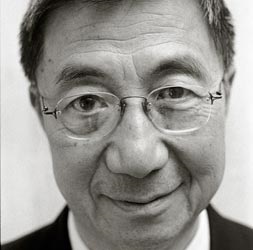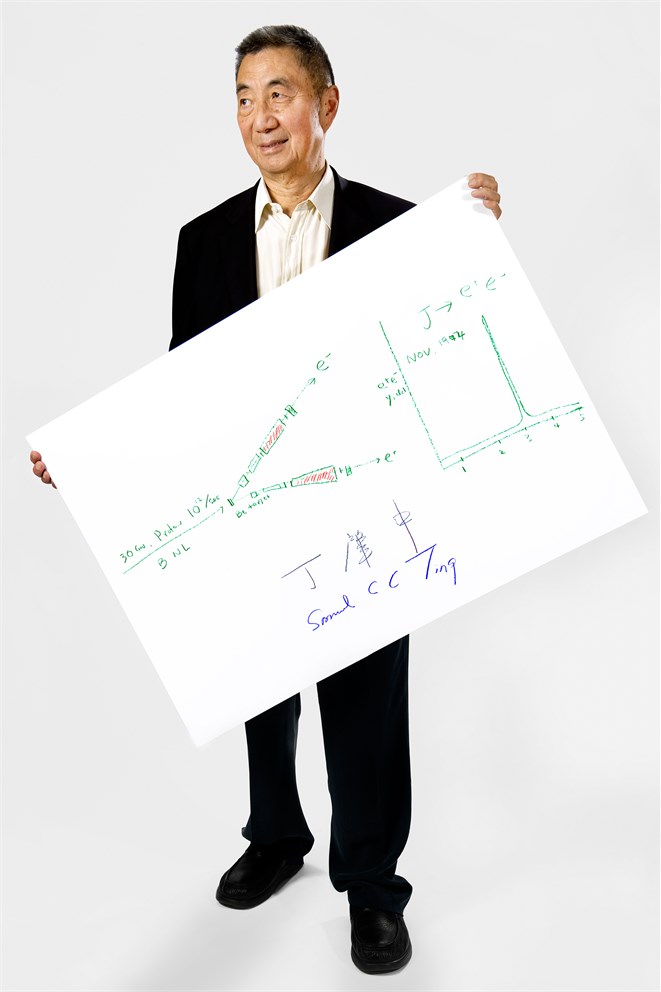
Samuel Ting was born in Ann Arbor, Michigan on January 27, 1936 while his parents, both academics, were visiting the University of Michigan from China. The family returned to China but, due to the Japanese invasion and subsequent outbreak of World War II, Samuel had no formal education until he was 12. In 1956, he returned to Ann Arbor to study math and physics at the University of Michigan, where he received his BSc in 1959, MSc in 1960 and PhD in 1962. Ting began his career at CERN – now home to the Large Hadron Collider – in Geneva in 1963. He returned to the US to teach at Columbia University in New York, where he was assistant professor from 1965-67. It was there that he became intrigued by an experiments at Harvard and Cornell Universities using photon collisions to produce electron-positron pairs, which seemed to show a violation of quantum electrodynamics. He set out to replicate the experiment at the Deutsches Elektronensynchrotron in Hamburg in 1966 and soon found out that the previous experiments at Harvard and Cornell were incorrect. In 1969 he joined MIT and in 1977 he was appointed as the first Thomas Dudley Cabot Professor of Physics.
In Germany, Ting’s team had succeeded in creating electron/positron pairs from which the properties of the parent particle could be studied. Seeking the same result with higher mass particles, the team that they discovered a new, unpredicted, long-lived heavy particle which Ting named the J particle. Around the same time Burton Richter’s team at Stanford, California, made the same discovery, producing what they called the ‘psi particle’. In November that year, Ting and Richter met at Stanford. They realised the J/psi particle belonged to a new family of elementary particles formed by a fourth quark, called the ‘charm quark’. This discovery was known as the “November Revolution” in physics and less than two years later, Ting and Richter were awarded the Nobel Prize in Physics. Ting proposed and leads the $2 billion Alpha Magnetic Spectrometer (AMS) experiment on the International Space Station to measure antimatter, search for evidence of dark matter and new phenomena from space. AMS has recorded more than 150 billion cosmic ray events. The AMS Experiment involves 16 nations from America, Europe and Asia.
Professor Ting has been recognised around the world for his work. He has a son and two daughters. He is married to Dr. Susan Marks Ting also of MIT.
Exhibition "Sketches of Science" by Volker Steger - Locations & Dates

By Volker Steger
Ting appears to be a quiet, maybe even shy person – and I worry a
bit how it will be possible to get him to draw and then pose. When
I explain the idea, he hesitates before asking for a table and a little
moment to himself. When I look at the drawing, I notice it is signed
twice: In Latin and Chinese characters!
Ting ist offensichtlich ein ruhiger, vielleicht sogar scheuer Mensch –
und ich frage mich schon, ob es möglich sein wird, ihn zum Zeichnen
und dann zum Posieren zu bringen. Als ich ihm die Idee erkläre,
zögert er einen Moment, bevor er um einen Tisch und ein wenig
Zeit bittet. Als ich die Zeichnung anschaue, stelle ich fest, dass er sie
zweimal signiert hat: In lateinischer und chinesischer Schrift!
The Story of J
by Adam SMith
Theory guides, experiment decides, so they say, and Samuel Ting’s sketch illustrates a particular experiment which led particle physicists to decide that the theory they had relied on up to that point was wrong, or at least insufficient. In November 1974 he discovered a new elementary particle, which he called ‘J’, at the Brookhaven National Laboratory in New York. Across the country, in Stanford, California, Burton Richter was discovering the same particle at the same time, and the two men shared the Nobel Prize shortly afterwards. Their experimental discoveries had been unpredicted by the existing theories, which therefore had to be substantially rethought.
Ting’s illustration shows the equipment used to generate J. A beam of high energy protons is seen coming in from the left and colliding with a target made of the element beryllium (Be). Such high-energy collisions can give rise to a host of products, including new, heavy particles. But such heavy particles are very short-lived and rapidly disintegrate into other, smaller particles. Two such ‘daughter’ particles are electrons and positrons (e+ and e-), which Ting’s team were experts in analysing, as shown towards the right hand side of the experimental apparatus in the sketch. By measuring the properties of these fast-moving electron/positron daughter pairs resulting from the collisions, Ting could work backwards to deduce the properties of the short-lived heavy particles that had given rise to them. Amongst the vast quantity of products of the proton-beryllium collisions, there appeared the new entity J, which had never been seen before. Ting and Richter met within days and announced that they had the same particle. Their results were published within the week and teams in Italy and Germany quickly searched for, and found, the new particle, confirming the results.
J is a meson, a subatomic particle made up of one quark and one antiquark, held together by the so-called strong interaction. The name ‘J’ is only one letter removed from ‘K’, and the K mesons had been long known when Ting’s particle was discovered in 1974. So, following the conventions used for naming subatomic particles, J was an appropriate choice for this new meson. As Ting has indicated in signing his drawing, however, it also happens, by lucky chance, to be very similar to the first character in his Chinese name!
